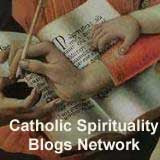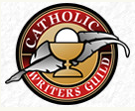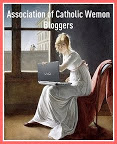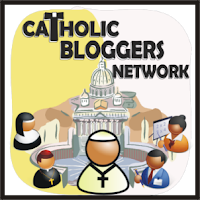Since Sacred Scripture is at the center of our homeschool, I decided to begin our studies on the papal conclave with a look at the origins of the papacy in Matthew 16. We have been reading The Golden Children’s Bible chronologically. We are just finishing the Sermon on the Mount with a unit on the parable of the wise and foolish builders. Reading Matthew 16 at this point provides a good bridge to studies of the pope.
For the best start to this unit, you (the parent) should prayerfully read Matthew 7:24-27 and 16:14-20 ahead of time. Make it the subject of your daily meditation. (If you don’t know how to do Christian meditation, read my recent post on mental prayer, or see this sample meditation.) You may want to share your insights or resolutions with your kids in the course of your studies. Then use as many of the following activities as you see fit.
Part I: Upon this rock
Read aloud Matthew 16:14-20 from a good children’s Bible. I prefer The Golden Children’s Bible. Have your children narrate the story back to you in their own words, one at a time. Kids 10 and older can write their narrations. You write from younger ones’ dictation.
Have your kids draw a church on a rock, with Peter’s “signature” on the latter. It can be as simple or elaborate as you direct.
Read aloud Matthew 7:24-27. Discuss: How were the wise and foolish builders different? Do you think Jesus would be a wise or foolish builder? Who is the rock Jesus built His Church upon? What kinds of storms could hit the Church? (You may have to give an example, such as persecution. Then brainstorm a list. Make sure that “teaching error” is included.) How many of these do you think have happened in the past 2000 years? How many times do you think the Church has come crashing down? Why can we be confident that the Church will stand firm until the end of time? (Emphasize that Christ promised to protect the Church from teaching error.)
Use Matthew 16:17-18 for copy work and memorization.
Part II: Papal primacy
Read aloud Matthew 18:18. Make clear that Jesus is speaking to all the apostles. Discuss: What authority did Jesus give all 12 apostles? (This is usually taken to mean the power to forgive sins or discipline their unrepentant flock.) What was given to Peter alone? What are keys for? How can Peter, who is only a man, have the keys of Heaven? (As head of the Church, he has divine authority to teach what is necessary for salvation. Those who want to enter heaven should follow Peter’s teaching.) Why do you think God wanted one man to be in charge, rather than everyone being equal? How many popes can there be at one time?
Study the papal coat of arms (see picture above).
Design a coat of arms as a family or as individuals. What simple objects can symbolize each person’s character, interests, and place in the family? Here are some traditional heraldic symbols. This could be a whole afternoon’s project!
Sign the Pledge of Allegiance to the Pope. Have your kids dress up in medieval costumes (as knights, etc.), genuflect on the left knee and say, “I pledge my love and fealty to St. Peter and his successors for as long as I shall live.” (Fealty = fidelity or loyal service.) Then have them each sign and date a copy of the pledge, using the link provided.
Older children (grade 7 +) can read The Primacy of Peter from My Catholic Faith.
The Primacy of Peter Papal Unit Study and Lap Book at Shower of Roses is incredibly well done. It contains all kinds of activities, especially for younger kids.
Part III: Apostolic succession

Domine, quo vadis? by Annibale Caracci (Photo credit: Wikipedia).
Tell your children the story of St. Peter’s death. If you need a refresher, you can find it here at Catholic Online.
Study the picture Domine, Quo Vadis? (right) Let everyone look at it for one minute. Then minimize this page and everyone (including the parent) draws his own rendition of it, using as many details as he remembers. You decide whether to have a pencil drawing only or to add color. Look at the picture again, and compare each of your drawings to it. Note how the Cross almost bisects the painting diagonally, drawing the eye from Peter’s bright clothes to Jesus. The dark background makes the figures stand out. Ask: How do you think Peter is reacting to Jesus in this picture?
Discuss: Is Peter still alive? How can he lead the Church today?
Explain that Peter and the other apostles appointed men to take their places before they died. Peter died in Rome after leading the Church there many years, so he is considered the first Bishop of Rome. He chose a man named Linus to lead the Church of Rome after him. Ask: Why do you think we have more than 12 bishops in the world today?
Read the list of popes from Peter through Benedict XVI. Children in grades 1 and up can memorize the popes since Blessed Pius IX until this month. Use the loci method taught by Kevin Vost in Memorize the Faith. (If you don’t have this book, I strongly recommend you buy it.)
Brainstorm a list of men in the Bible who had their names changed by God. Why did God change their names? Why do you think he changed Simon’s name to Peter? What do you think would be a good name for our next pope? What names would not be so good?
 Each child who is old enough can choose one of the popes in the list they memorized to research further. What was his given name? Why did he choose the regnal name that he did? Share a short written or oral report with the family.
Each child who is old enough can choose one of the popes in the list they memorized to research further. What was his given name? Why did he choose the regnal name that he did? Share a short written or oral report with the family.
Each child can also research the meaning of his own given name. If their names have a Christian meaning, help them decide how they can concretely be more like the ideal their name is calling them to.
Then do this art activity: Fold a piece of 9 x 12 white construction paper in half lengthwise and crease. Turn the paper sideways. On one side, the child writes his name, sitting on the fold. He should use cursive if he knows it. Use a black crayon. Turn the paper 180° and write the meaning of the name in the color of his choice, also sitting on the line. Then color the shapes around the words in several layers of colors, as shown in the picture at left. Display vertically.
Part IV: the conclave
There are some excellent materials on the web for this. I have linked to the best ones I could find. Start with the unit study at Shower of Roses that I linked to above. Take a look at these as well:
- Papal Conclave Play set at alivinggarden.com
- How the Pope is Elected Graphic Slide show at Vatican Insider
- How Do They Choose the Pope? video from Busted Halo
- Electing a Pope Game at The Catholic Toolbox
- Electing a pope worksheet from The Catholic Toolbox
Each family member can “adopt” a cardinal elector to pray for during the conclave at adoptacardinal.org.
Finally, just for fun, younger children can make a miter to wear and play Simon Peter Says.
End your unit by having each child compose a prayer for the cardinal electors. Write it down for younger kids, while older children write their own. Encourage them to pray this prayer each day during the conclave.
Connie Rossini














Good ideas; thank you! Loved this so much, I’m sharing it on facebook. Also, when reading Matthew 16, I like to link back to Isaiah 22:19-25 to get a look at the Old Testament office of the king’s steward during the Davidic kingdom. This verse, more than any other, led me back to the Church years ago.
Thanks! I agree the Isaiah passage is great. I thought about including it here, but it’s a little beyond anyone younger than high school. I was once a Catholic apologist, and I remember a former/anti-Catholic being floored when I brought that passage up. Though admittedly, I think he was just floored that a Catholic knew anything about the Bible!
Thank you for these great ideas!
You’re welcome! I’m glad you found them helpful. We are just starting to use them here ourselves.
What beautiful insights and activities. I’m really looking forward to sharing these with my children this week.
I also shared a link to your site from my new post: Ten Resources for the Papal Conclave. http://www.californiatokorea.com/2013/03/ten-resources-for-papal-conclave_10.html
God bless you!
Thanks, Micaela. I’ve tweeted your post to my Twitter followers. I spent a couple years i Japan, so I’m interested in reading about your experiences in Korea. I visited South Korea at Christmas on e year.
Thank you so much for the Papal Lab Book resource. I am starting late with Papal studies, but I believe it will still be pertinent to my children’s grasp of this historic event. Your blog is inspiring!
You’re welcome. Of course, that great source was not my own. I just linked to it. It’s not too late–we are just finishing the papal primacy section ourselves!
Such great plans, Connie! Thanks for sharing the link with me, and thank you for linking to my Lap Book! I will have to add this post to my own list of resource suggestions. God bless!
Thanks, Jessica. That means a lot, coming from you. God bless you too.
Hi there! I just want to give a huge thumbs up for the great
info you have right here on this post. I will likely be coming again to your weblog
for extra soon.